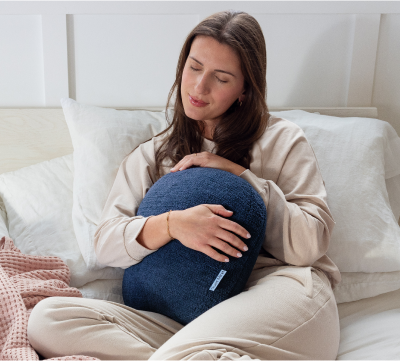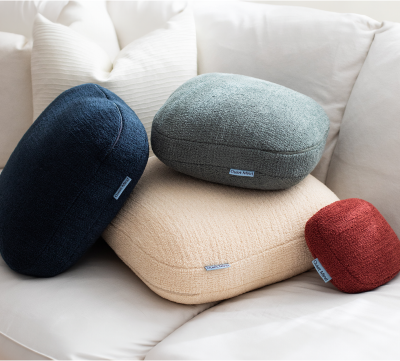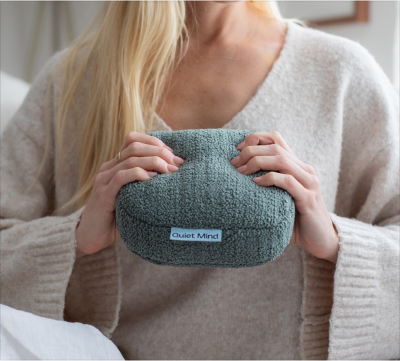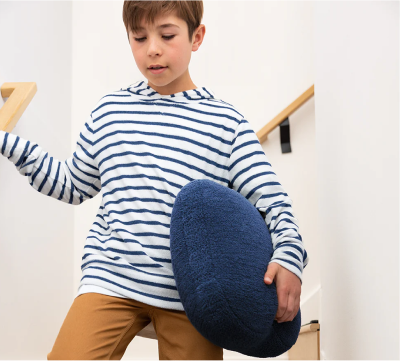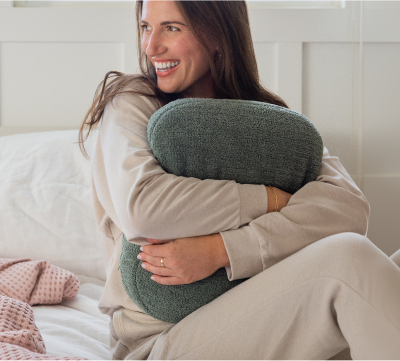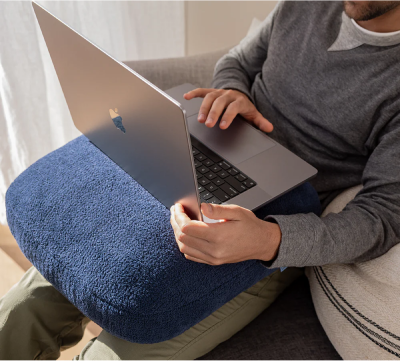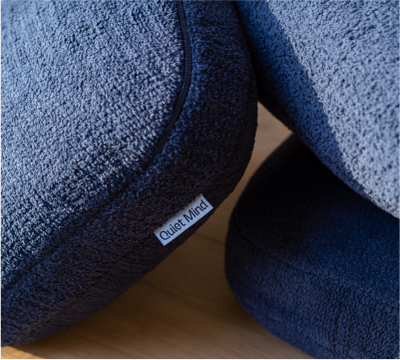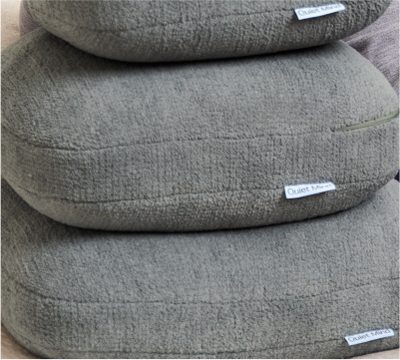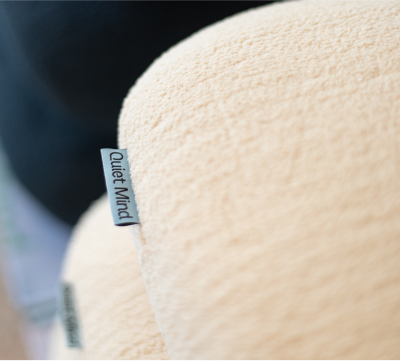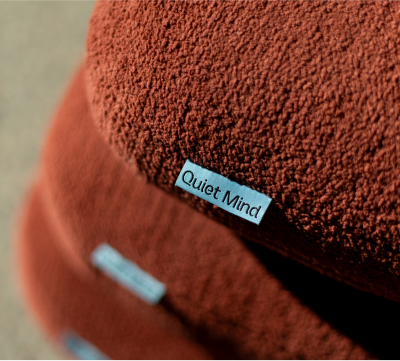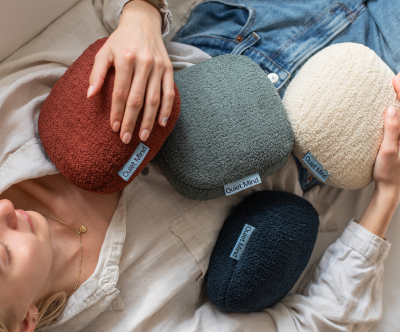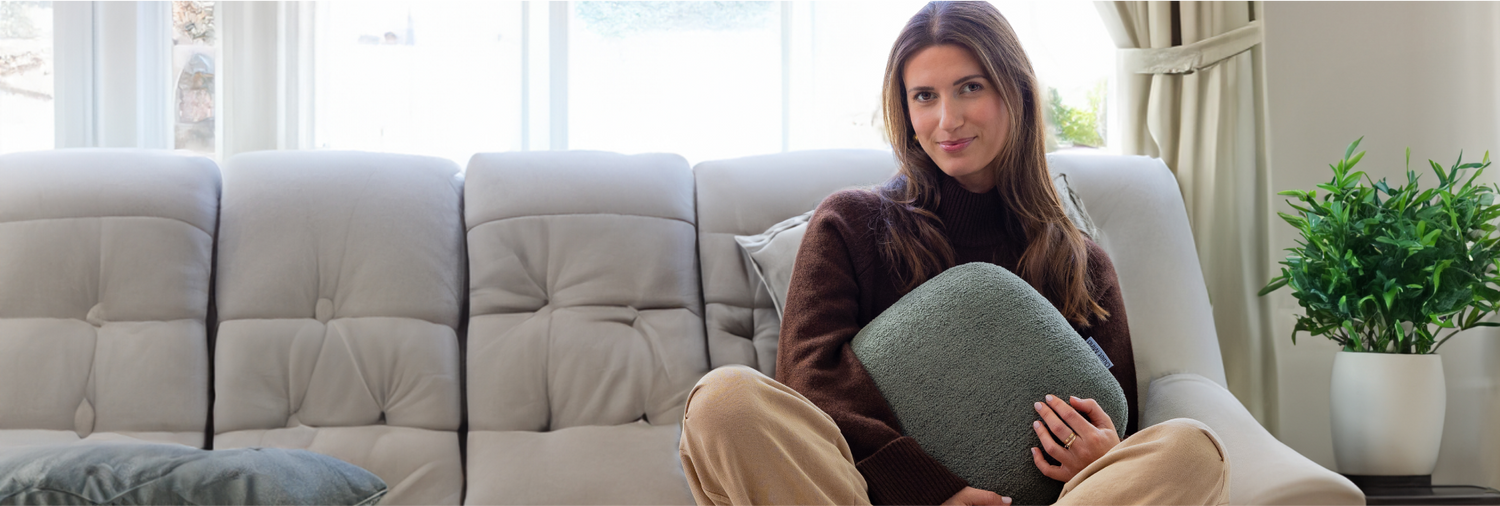The human need for physical touch is as innate as it is powerful, and it’s no wonder that the absence of this connection can leave us feeling lonely or sad. Whether you’re living far away from loved ones or find yourself in moments where a comforting hug is out of reach, know that you’re not alone in your need for this simple gesture.
So, what can you do when you need a hug but don’t have anyone? From hugging a cozy weighted pillow to the gentle act of self-hugging, there are many techniques to bridge the gap between loneliness and comfort. Here’s how to incorporate them into your daily routine and why hugging, in all its forms, is so vital to our overall well-being.
What To Do When You Need a Hug
I need a hug, but I don’t have anyone! It’s not uncommon to feel this way! The next time you yearn for the comfort of a hug, but your loved ones are out of reach, try these creative and effective hug alternatives to start feeling better right away.
Embrace a Weighted Pillow
Hugging a weighted pillow can offer a tangible sense of comfort and closeness when you're feeling lonely. Weighted pillows provide deep pressure stimulation, which has been shown to have a calming effect, easing anxiety and promoting relaxation.
Hugging a weighted pillow stimulates the release of oxytocin, sometimes called the “cuddle hormone.” Oxytocin is crucial for social bonding, emotional regulation, and stress reduction. This hormonal response leads to feelings of comfort and connection, similar to the feeling you experience during a genuine hug.
Moreover, the gentle pressure applied by the weighted pillow can have a soothing effect on your nervous system. It activates the parasympathetic nervous system, or “rest and digest” response, which counteracts the stress response, reducing stress hormones, like cortisol, and relieving tension and anxiety.
Practice the Art Self-Hugging
The act of self-hugging may seem simple - maybe even a little silly - but it can have a powerful impact. Wrapping your arms around yourself is a gesture of self-love that is a tangible reminder that you are worthy of comfort and affection.
Much like hugging a weighted pillow, self-hugging promotes the release of oxytocin, encouraging feelings of bonding and reducing stress. Practicing self-hugging fosters a deeper connection with yourself and cultivates a sense of inner security.
To practice the technique of self-hugging, find a quiet space and settle into a comfortable position. Gently cross your arms over your chest, resting each hand on the opposite shoulder. Take deep, intentional breaths, releasing any tension as you exhale.
Cuddle With Your Pet
The bond between humans and animals can bridge emotional gaps. When your need for a hug and a human touch is unmet, consider spending time with your furry or feathered friend. A pet’s presence and touch can be incredibly soothing.
Petting, holding, and cuddling an animal can release endorphins and evoke a sense of connection and companionship. Whether it’s the warmth of your cat nestled against your or the joyful wiggles of your dog, these interactions can help fill the void and provide the kind of tactile comfort you’re yearning for.
Virtual Hugs and Social Connections
In today’s digital age, the physical distance between loved ones doesn’t have to equate to emotional isolation. Though mediated by screens, virtual connections can offer a surprising degree of comfort.
The next time you’re wondering what to do when you need a hug, consider reaching out to a friend or family member through video calls. The power of technology allows you to bridge any distance and bring their comforting presence into your space.
While they may not be able to replicate the tactile sensation of physical contact, “virtual hugs” use video calls, voice calls and messages, or even text messages to convey a sense of closeness and social support.
Virtual hugs and social connections can be a heartwarming reminder that you’re not alone in your need for connection - there are people who care about you and are ready to offer support, even from a distance.
Mindfulness and Meditation
When the longing for a hug becomes particularly overwhelming, consider turning inward with mindfulness and meditation practices. These techniques can help you cultivate a sense of presence and self-awareness, allowing you to connect with your inner self.
You can create a space for self-compassion and emotional nourishment through mindful breathing and meditation. As you close your eyes and focus on your breath, visualize each inhale and exhale as a gentle embrace, bringing you a sense of well-being.
Create a Self-Care Routine
While it may not provide the immediate physical touch you desire, establishing a self-care routine can profoundly impact your overall well-being. Engage in activities that help you feel nurtured and cared for.
If you need some ideas, how about practicing a hobby you love, indulging in your favorite book, or watching something funny on TV? Going outside in the sunshine, exercising, or eating mood-boosting foods are also all healthy acts of self-care.
Prioritizing self-care sends a powerful message to yourself - you deserve the time and attention you’re longing for, and you can provide it for yourself.
Practice Self-Compassion
In moments of longing and loneliness, practicing self-compassion is essential. Be gentle with yourself and acknowledge the validity of your feelings. Offer kindness and understanding instead of putting yourself down for needing a hug.
Treat yourself like a dear friend in need, validating your emotions and soothing your distress. Self-compassion is a skill that takes time to develop, but it’s essential to your overall well-being, especially in times when comfort from others isn’t readily available.
Seek Professional Help
If your yearning for a hug becomes overwhelming and begins to impact your daily life, seeking professional help is a step of courage and self-care. A mental health professional can provide guidance, support, and coping strategies tailored to your unique situation.
Recognizing When You Need a Hug
In a world brimming with responsibilities, distractions, and ever-evolving demands, it’s easy to overlook the need for a hug. Learning to recognize this need is an essential step toward prioritizing your emotional well-being.
Tuning into your emotions is a crucial aspect of recognizing when you need a hug. Take a few moments each day to check in with yourself. Are you feeling sad, anxious, stressed, or lonely? If so, it’s time to pause and listen to what your inner self is telling you.
Your body may also offer some physical cues that indicate the need for touch and connection, such as tightness or tension in your shoulders or chest, or a sense of restlessness that doesn’t go away. Take a moment to acknowledge these sensations and plan some time for self-care.
The Science Behind the Need for a Hug
The longing for a hug isn’t just a sentimental whim. It’s deeply rooted in the intricate biology of human connection. Our bodies and minds are wired to respond to hugging, or alternatives like hugging a weighted pillow, in profound and meaningful ways. It all starts with the increase in oxytocin levels.
Oxytocin plays a central role in our need for physical touch. The release of oxytocin stimulated by hugging creates a cascade of emotional responses that have a profound impact on stress reduction. That’s why hugging and alternatives to hugging can provide instant calm and reassurance, lower your blood pressure and heart rate, and soothe your nervous system.
Hugging, in its many forms, also activates the brain’s reward system, which is responsible for feelings of pleasure, connection, and well-being. When you experience physical touch, the brain releases dopamine, which creates a sense of joy, contentment, trust, and empathy.
Another fascinating aspect behind the need for a hug involves mirror neurons. These specialized brain cells are responsible for mimicking the actions and emotions of others. When you see someone else getting a hug, your mirror neurons activate, and you feel their experience to some extent. This effect deepens your emotional connection with the act of hugging in its various forms.
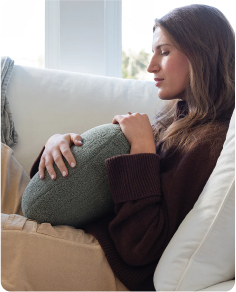
- Carrie C
Nurturing Well-Being Through Hugging Alternatives
As you embark on your journey towards self-care, we invite you to experience the embrace of our Original Weighted Pillow. Crafted with care and designed to provide a comforting pressure akin to a hug, its soothing embrace can offer solace, relaxation, and connection - any time, anywhere.
Remember, when you need a hug, you have the power to nurture and comfort yourself with feel-good alternatives that are easy to incorporate into your daily life. Through self-awareness, self-compassion, and a willingness to love yourself, you can meet your emotional needs.
